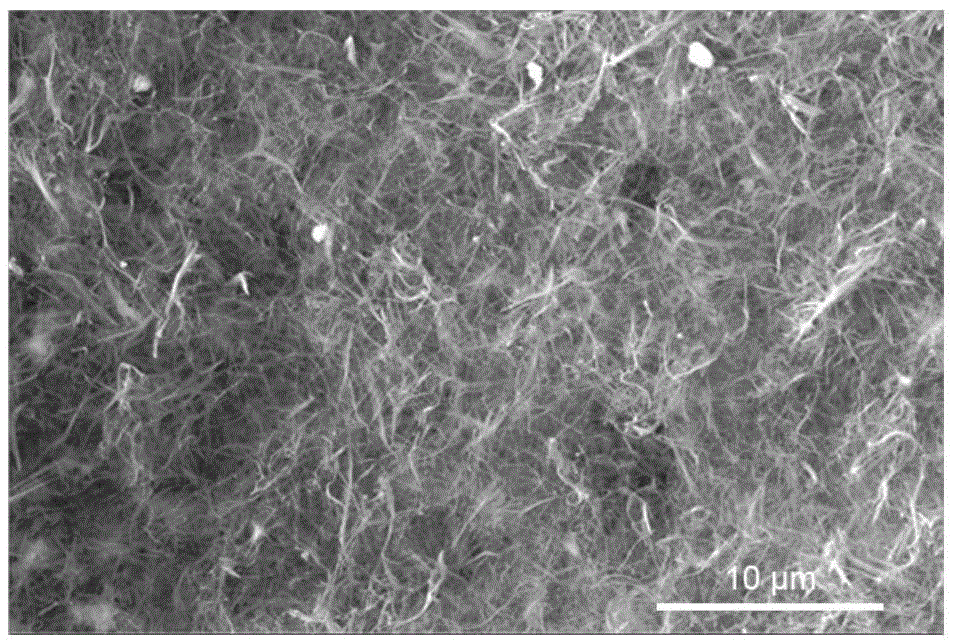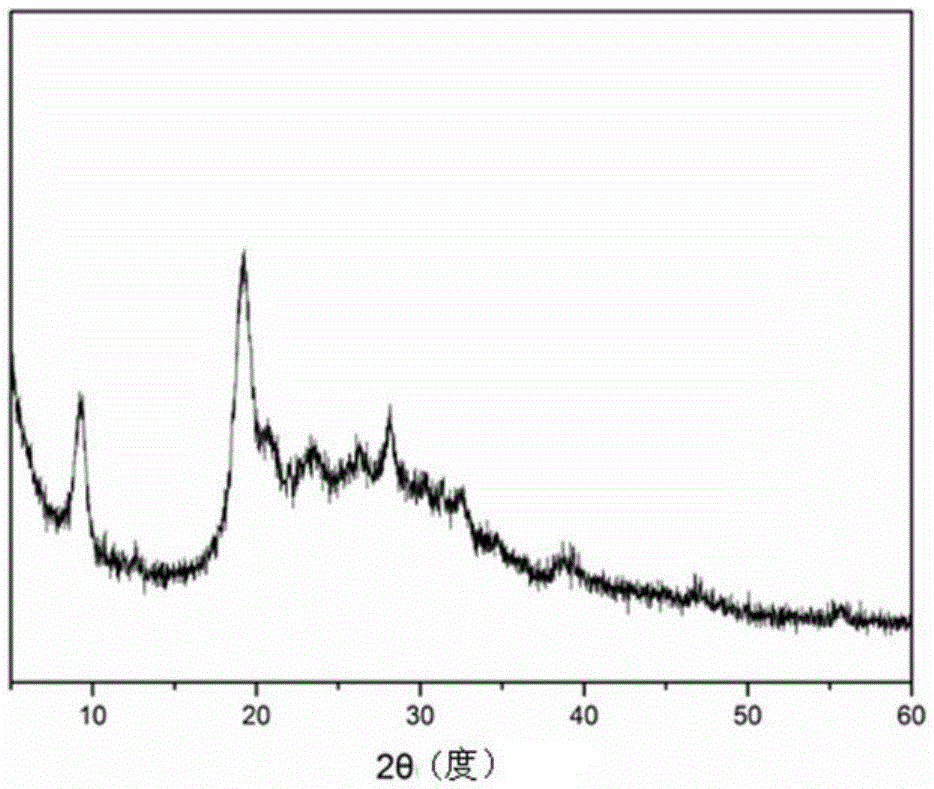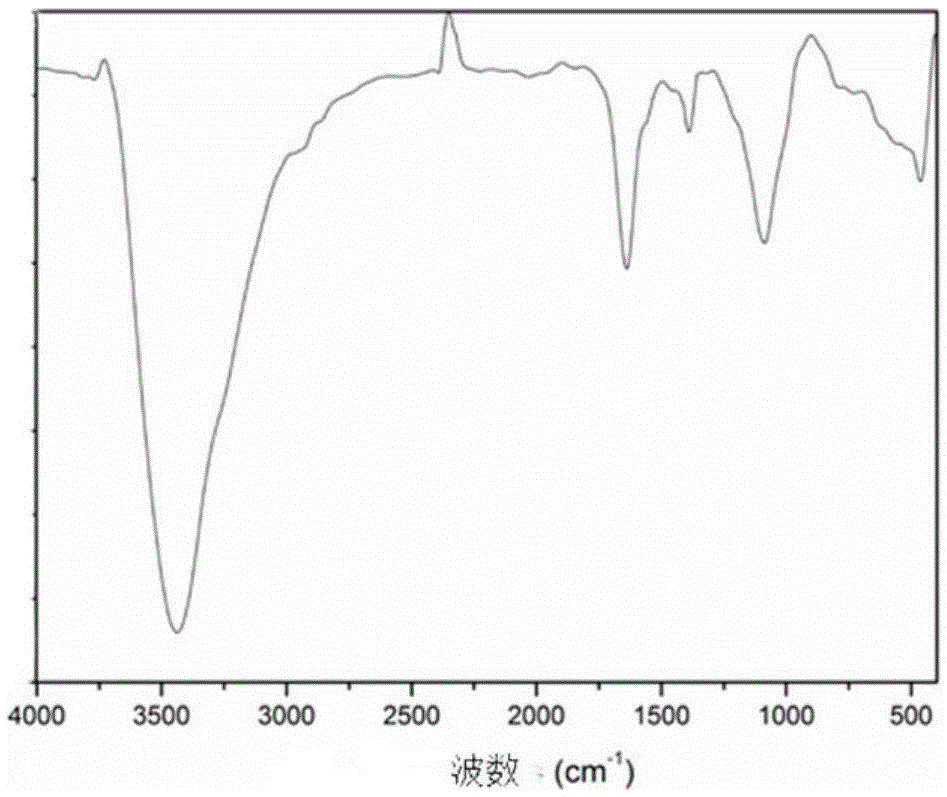Chitin-nanometer-fiber aerogel with high specific surface area and preparing method thereof
A high specific surface area and nanofiber technology, applied in the field of fiber airgel, can solve the problems of difficult process control, high price, high toxicity, etc., and achieve the effects of reducing experimental costs, high safety, and reducing pollution
- Summary
- Abstract
- Description
- Claims
- Application Information
AI Technical Summary
Problems solved by technology
Method used
Image
Examples
Embodiment 1
[0044] 1. Extract 2g of industrial waste shrimp shells with phenylethanol at a ratio of 1:2 to remove some organic matter, then use glacial acetic acid to adjust the pH to 4.8 and add 1wt% NaClO 2 , heating at 80°C for 3h to bleach;
[0045] 2. The bleached shrimp shells were prepared as a 1wt% dispersion by mechanical disc grinding to obtain a 1wt% coarse chitin dispersion;
[0046] 3. Add the phosphate buffer solution to the above dispersion, adjust the pH of the dispersion to 6.8, stir on a magnetic stirrer at 1300 rpm, at room temperature and pressure for 15 minutes;
[0047] 4. Then add TEMPO and NaClO, after the dispersion is uniform, then add NaClO 2 , TEMPO:NaClO:NaClO 2 The molar ratio is 1:10:100, and the container is quickly sealed and heated to 80°C for 2.5 hours. After the reaction, add 15ml of ethanol to terminate the reaction;
[0048] 5. Repeatedly rinse the obtained dispersion with deionized water to neutrality, and then use an ultrasonic pulverizer (1500W)...
Embodiment 2
[0051] 1. Purchase 2g of bleached chitin on the market, crush it through an 80-mesh sieve, prepare a 1wt% dispersion, and store it at 4°C
[0052] 2. Take 400ml of the above dispersion, stir evenly, add 360ml of phosphate buffer solution, adjust the pH of the dispersion to 7.
[0053] 3. After that, add TEMPO and NaBr, disperse evenly, then add NaClO, the molar ratio of TEMPO: NaBr: NaClO is 1:10:25, quickly seal the container and heat it to 70°C for 2 hours, after the reaction, add 10ml of ethanol to terminate the reaction;
[0054] 4. Repeatedly rinse the obtained dispersion with deionized water until it becomes neutral, and then use an ultrasonic pulverizer (1500W) to sonicate the dispersion for 1.5 hours;
[0055] 5. Substituting the dispersion liquid with tert-butanol to obtain a gel, freezing the obtained gel at -20° C. for 4 hours, and obtaining the chitin nanofiber airgel after freeze-drying.
Embodiment 3
[0057] 1. Treat industrially discarded crab shells with phenylethanol at 80°C for 6.5 hours at a ratio of 1:2, then adjust the pH to 4.8 with hydrochloric acid and add 1wt% NaClO 2 Heat at 90°C for 2.5h, and after cleaning, glue-mill the remaining solid matter into a 1wt% dispersion;
[0058] 2. Take 400ml of the above dispersion, add the phosphate buffer solution to the above dispersion, adjust the pH=6.5, stir evenly, add 0.064g of TEMPO and 0.4g of NaBr, after the dispersion is uniform, then add 2mol / LNaClO2ml, use 0.5mol / LNaOH Control the pH of the dispersion to 10, react for 1.5h, and then add 20ml of ethanol to terminate the reaction;
[0059] 3. Repeatedly rinse the obtained dispersion with deionized water to neutrality, and then use an ultrasonic pulverizer (1500W) to sonicate the dispersion for 0.5h;
[0060] 4. The dispersion liquid was replaced with n-butanol to obtain a gel, the obtained gel was frozen at -80° C. for 4 hours, and the chitin nanofiber airgel was ob...
PUM
 Login to View More
Login to View More Abstract
Description
Claims
Application Information
 Login to View More
Login to View More - R&D
- Intellectual Property
- Life Sciences
- Materials
- Tech Scout
- Unparalleled Data Quality
- Higher Quality Content
- 60% Fewer Hallucinations
Browse by: Latest US Patents, China's latest patents, Technical Efficacy Thesaurus, Application Domain, Technology Topic, Popular Technical Reports.
© 2025 PatSnap. All rights reserved.Legal|Privacy policy|Modern Slavery Act Transparency Statement|Sitemap|About US| Contact US: help@patsnap.com



